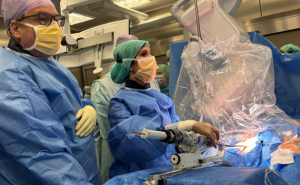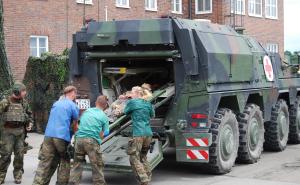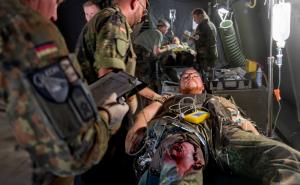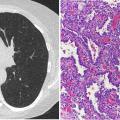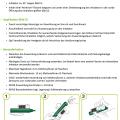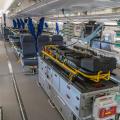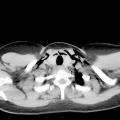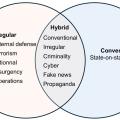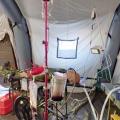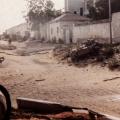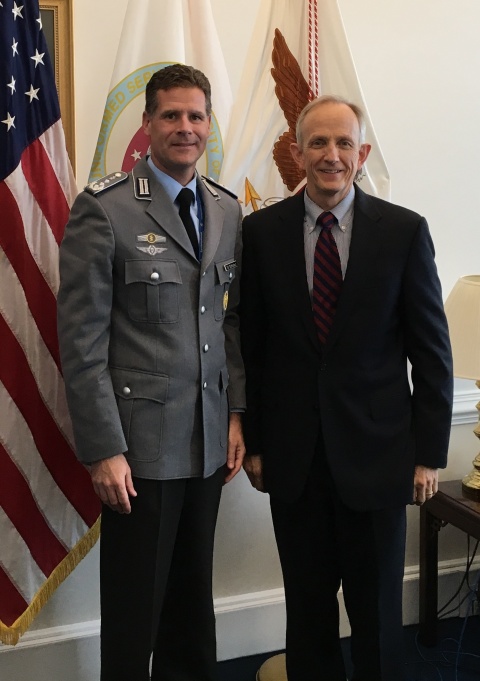
“Certainly the biggest change!”
Interview Oberstarzt Dr. Kai Schlolaut mit Dr. David Smith
Dr. David Smith nimmt derzeit die Aufgaben des Assistant Secretary of Defense for Health Affairs im U.S. Department of Defense wahr. Als höchster Fachvorgesetzter für das gesamte U.S. Military Health System (MHS) und die medizinische Versorgung von über 9 Millionen Anspruchsberechtigten ist er aktuell verantwortlich für die Umsetzung der umfassenden Vorgaben des U.S. Kongresses im National Defense Authorization Act 2017 zur wohl größten Reform des Military Health Systems der vergangenen Jahrzehnte.
Dr. Smith you are currently performing the duties of the Assistant Secretary of Defense for Health Affairs in the Department of Defense. What are the current challenges the U.S. Military Health System (MHS) faces today?
Some things basically don’t change, regardless of who might be in leadership, and first among those is our focus on the medical readiness of the force and a ready medical force. Those are constants. One of my concerns is that the lessons we have learned of the wars of the last 15 years aren’t lost and that we are able to ensure that we can perform even better the next time. We are very proud of what has been accomplished. We have the highest survival rate in the history of warfare. And we have the lowest disease and non-battle injury rates. But sustaining these achievements is clearly the concern and we are in the process of looking at how we can sustain this incredible performance. From a readiness point of view, making sure we have a fit and medically ready force is critically important.And then there is the need for nimbleness for our future mission and the changing mission sets. One of the common errors is to plan for the war that we just had and not for the future. It’s a matter of looking forward as missions may be different. For example, we may not have our air superiority next time. We are seeing more demand signal for small and distributed operations and the need for prolonged field care before you can actually get to well-equipped surgical suites. So what we grew accustomed to in Afghanistan may not be what we need next time.
We are also looking at things like healthy weight, smoking, and binge drinking. Some of these topics are societal for us, but some of them seem to be related to military service. We have a higher smoking rate in the military than in the general public. So constantly trying to figure out how we can affect healthy behavior in our force is a critically important part of the medically ready force as well. Something which is unique to us compared to other militaries is the very large beneficiary population (troops, families and retirees) we are responsible for. We have a ‘wrap-around’ benefit to make sure that everybody gets access to our comprehensive health benefit. Whether it is in the direct care system -by that I mean the part of our system that is provided by those in uniform and ‘owned’ by the Department of Defense- or it’s in the purchased care system that is contracted through the private sector, we are responsible for making sure our beneficiaries have access to high-quality, high-safety health care. But going forward we see the need for greater integration between all the pieces and parts that make up that benefit.
The U.S. Military Health System operates 54 Hospitals and Medical Centers and more than 400 Clinics worldwide. What role will the Military Treatment Facilities (MTFs) play in the future?
The MTFs are going to be an essential part in our readiness mission in the future. We have the obligation to take care of those who are eligible for our benefit. But going forward I see a refocus of our direct care system to what helps us assure the maintenance of a ready medical force and a force that is medically ready. We must be able to keep our skills current. We will be doing less of certain kinds of care and more of other kinds of care in the future. We certainly want to have medical, surgical and intensive care. Our primary training programs for our medical professions are in our medical centers. I see concentration and enhancement at those facilities going forward. I see more partnerships happening between the civilian sector and the military. We have a number of these partnerships already and I see that expanding. And we are doing a fair amount to be able to define what the actual requirements for deployments are to be able to size the system to maintain that readiness posture. I see our MTFs playing a central role in that.
The other key piece of this is the fact that our corpsmen and medics who are really the front line heroes of our work, need a place to be able to practice. Our medics are not necessarily licensed to practice outside of the military health care system. So I fully anticipate that we are going to need our direct health care system for their practice, particularly because we don’t have an alternative for that part of our team.
Could you give another example how you want to enhance readiness of the medical forces in the future?
There are a number of different ways we are looking at that. We are clearly looking at our investments in research and development. We have a sizeable research and development portfolio and it’s all oriented towards readiness and force health protection. And we will continue to see robust research and development. During wartime we see a lot of progress in the ability to take care of traumatic injuries on the battlefield. We are trying to continue progress by developing partnerships with trauma centers around the United States to be able to continue some of the battlefield related trauma research and development as we see less casualties in the field.
I would expect more integration of the MHS with civilian trauma centers and academic health centers. The National Defense Authorization Act (NDAA) encourages us to do that kind of work. And then I would expect more partnerships with our Veterans Administration colleagues. The NDAA also gives us more latitude for taking care of a wider population base of civilians and veterans. You may or may not be aware of our Level I trauma center in San Antonio. The NDAA actually helps facilitate similar expansion across other parts of the military health system or partnering with civilian systems.
We are also looking at developing KSAs (Knowledge, Skills and Attributes) for each one of our deployment specialties. We started with surgery, because that’s obviously important for battlefield medicine. Looking at what a surgeon needs to know, what sort of skills does he need and what sort of attributes would he have to have to be successful? And this is particularly important because the practice of surgery has been changing. And I am sure it is in Germany also. Surgery is becoming less invasive; we are doing more laparoscopic procedures, which are great for the patient, but problematic for the practicing skills required in the field. It is important to understand what an expeditionary surgeon needs to know. The KSAs help us to figure out where we can place or send our providers for practice and where the facility is that will help to fill the gaps. We are setting up a system to be able to make sure -in a more evidence based way- that everybody is ready for deployments and has had exposures in the training that they need. The KSAs will help us to identify deficiencies and to expand our direct care system or our partnerships.
You have already mentioned the National Defense Authorization Act. The U.S. Congress has passed the NDAA for Fiscal Year 2017 recently with detailed provisions to modernize the MHS. Was this surprising to you?
This is certainly the biggest change that has probably ever occurred in the MHS, but I am not sure it really should be that surprising. Everybody expects and demands top notch care for our troops, families and retirees. And there have been a number of high profile studies with suggestions to make it even better than it is now. The NDAA emphasizes jointness and we know that jointness is part of our success, that has been clearly demonstrated in places like Iraq and Afghanistan in partnership with our allies. The NDAA also talks about maintaining the Trauma Registry and the Joint Trauma System and the clear value we get out of them.
The NDAA also helps drive efforts to make the MHS feel like one enterprise. Right now, it feels more like four different systems, because each of the services Army, Navy and Air Force along with the Defense Health Agency (DHA) has their sets of rules, although there is overarching policy.
How will the NDAA impact the MHS in the future? What does that mean for your organization, the administration and management of the MTFs and the relationship between DHA and the services?
That’s the important question we are working through right now. And clearly this is consuming a fair amount of our time. There are 50 different components to this legislation. Just for perspective, we normally receive 5 or 10 pages of legislation and we received 178 pages this year. I have regular meetings with the Surgeon Generals of each military service, the Director of the DHA, and the Joint Staff Surgeon. We meet at least weekly face-to-face to work through and make decisions about where this is going to go in the future. So it’s a work in progress. But what the NDAA does is it shifts responsibilities. The DHA will in future be responsible for the administration and management of the MTFs, where now each individual service Army, Navy and Air Force administer the MTFs. The MTF commanders will still report to a service intermediary command for their command and control. But the rules about how to appoint patients, operating hours, patient-safety control among others will become the responsibility of the DHA. One resourcing authority, one set of rules and instructions. The DHA then will be responsible for making sure the readiness requirements are met that the services determine.
What is your vision of the MHS enterprise in future?
Well, we have a pretty successful enterprise as it already sits. And we want to build on that success. We are going to have a direct care system (the military run facilities), that is going to be more orientated towards readiness than just the provision of health care to our beneficiaries. The patients will still have a robust benefit but they may get their care in that direct care system or they may go downtown to a contractor for some or all of their care in the future. The important thing is that they have access to high quality and easily accessible care and that we can be very confident that they are getting the best care they can receive. At the end of the day we want the best care available and for it to be highly accessible. And all of that work supporting a ready medical force and a force that is medically ready.
Last but not least: How do you experience our U.S.-German military medical relationship at the moment?
Germany is of course one of our invaluable North Atlantic Treaty Organization allies and we have a number of examples of where our medical forces have fought together and have been highly successful together. I think we have a growing and incredibly robust partnership that I hope will continue to expand and get larger. As you know the largest U.S. military presence in Europe is in Germany. We appreciate all the incredible support that we receive from the German military and the German people. And we use and rely upon a fair amount of German care. Overall I see the partnership is essential to our ability to be able to do our bilateral missions. And I think having a liaison at the Defense Health Headquarters has been particularly useful and a clear sign of that enduring partnership and our deepening relationship between our two countries.
Dr. Smith, thank you very much for the interview.
Korrespondenzadresse des Autors:
Oberstarzt Dr. Kai Schlolaut
[email protected]
Datum: 06.12.2017
Quelle: Wehrmedizin und Wehrpharmazie 3/2017

